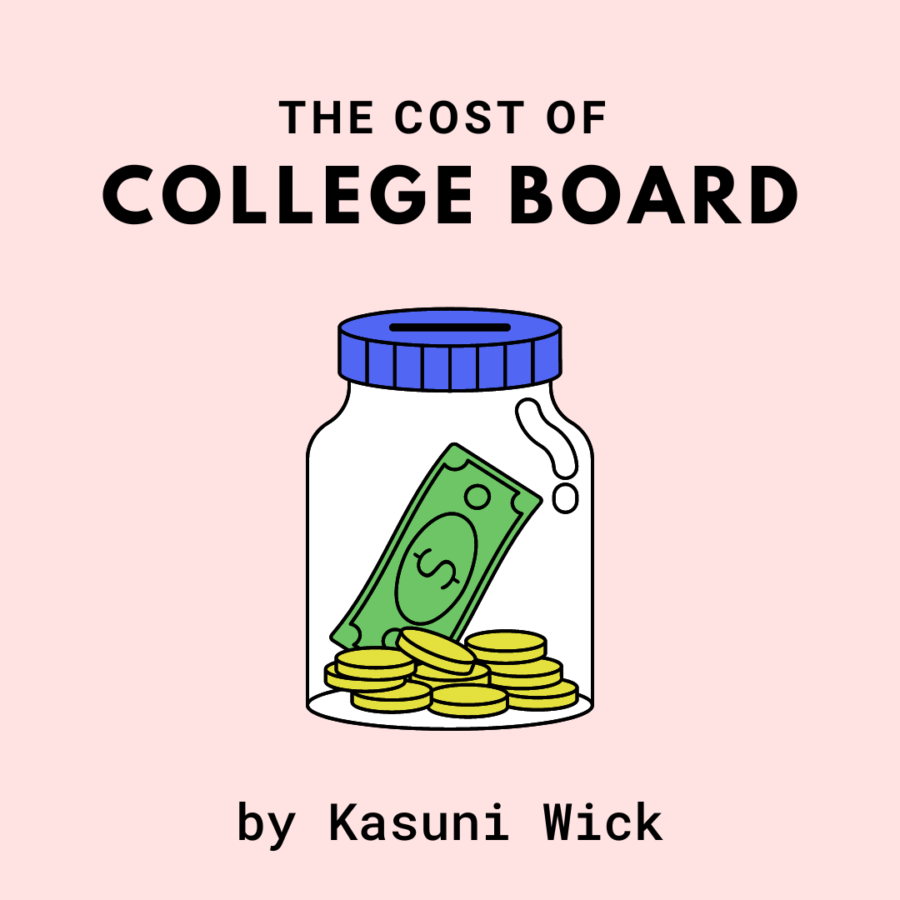College Board: Let’s Talk About It
College Board. A money-making, wallet-sucking scheme, concocted by greedy entrepreneurs who sought to capitalize on the higher education experience. At least, that’s my opinion. But, I do have the math to back it up, if we consider all College Board related expenses, like the SAT, AP exams, and the CSS profile. We surveyed Morris Hills seniors to get their College Board information.
According to our survey, 92.3% of seniors have taken the SAT, and most MH seniors took the SAT at least twice. Only 8.3% of seniors said they received a fee waiver for their SAT administrations. The SAT costs $52 per administration, and that’s on the low end, considering that it costs extra to receive your full score send, reschedule your exam, or cancel your exam. So, 2 x $52 = $104.
The average number of AP exams taken by students was 6 exams, and out of the students surveyed, 0% received a fee waiver for any exam (excepting the $144 fee for AP Research students) So, our total AP cost over four years of high school is, on average: 6 x $90 = $540.
Now, the testing is over. But we still have to talk about score sends. Most college applications still require students to submit either their ACT or SAT score. While some colleges allow students to self-report their scores, other schools require students to submit an official score send from the College Board, which costs $10 per school. For MH seniors, the average number of scores sent was 6. So, 6 x $10 = $60.
(Tired of multiplying? Yeah, so are we. )
Other than testing, another key component of the college application process is financial aid. Most schools use the FAFSA, which is a completely free federal financial aid service. However, some schools (approximately 240, according to College Board) utilize the CSS Profile (College Scholarship Service Profile). This College Board-owned service collects students’ financial information to send to their application schools. In true College Board fashion, the CSS profile is not a free service and costs $12 per send. According to our survey, more than half of MH seniors submitted the CSS profile, and the average number of schools that the CSS profile was submitted to was 4. So, 4 x $12 = $48.
Okay, time for the final sum. $104 + $540 + $60 + $48 = $752.
The average Morris Hills student spends $752 on their education through the College Board. Again, that’s the average, meaning that students could spend less….. or a lot more. Personally, my calculated cost came to around $1500, considering the high volume of AP classes that I took over four years of high school. If we multiply that by 3 (accounting for my two siblings who also took a similar number of APs), my family has spent approximately $4500 on College Board-related expenses.
Yikes. There goes my “free public education.”
There’s not much one can do about the costs relating to the SAT and CSS Profile, as those are requirements set forth by individual colleges and universities. However, we do have some flexibility regarding AP exams.
Although one can argue that nobody is forcing students to take AP exams, there is an unspoken pressure to do so. Honors classes aren’t offered for every course, like how 12th-grade English students either have to take AP Literature or AP Language or drop down to the CPA level. Advanced students may be wary that CPA-level English won’t be academically challenging enough, which forces them to enroll in an AP. Also, students enrolled in the Academy or Magnet programs are required to take certain AP classes, like AP Physics, AP Chemistry, AP Biology for Academy students, and adding AP Seminar and AP Research for Magnet students.
Furthermore, students must register for their AP exams in the fall, around October/November. This is a time when coursework has barely begun, and students may not be able to gauge the actual difficulty of their class. Students may register for the exam and pay the hefty exam fees, and then realize later in the year that it may not be feasible for them to get a passing score on the exam. Even if students decide to cancel their exams, they only get half of their exam fee refunded.
Finally, there is absolutely no guarantee that a student’s college will actually accept their AP credit, so students may be registering, paying, and taking an exam that will have no real benefit on their college education. It’s a tricky situation to predict, as most students don’t commit to their college until May of their senior year, so they don’t know which APs will count towards college credit until exam administration starts (and that doesn’t even account for any APs students take before senior year). According to the Progressive Policy Institute, 86% of colleges restrict the use of AP credit. Common policy is for colleges to only accept scores of a 4 or 5, regardless of the fact that College Board has declared students who score a 3 to be “qualified,” or at least capable of passing an introductory-level course in that subject.
All in all, the cost of the College Board is monumental. The potential return of these College Board expenses, particularly for AP exams, seems dramatically underwhelming in comparison. Going forward, students should always make calculated decisions about their education concerning the College Board, instead of letting $752 be sucked into the money-guzzling vortex of the College Board.


